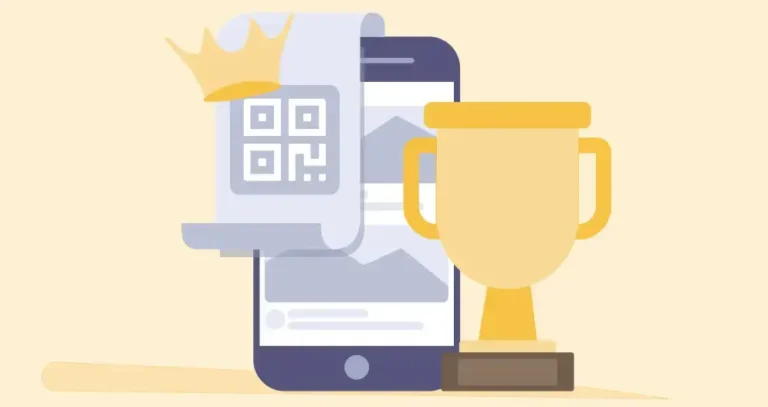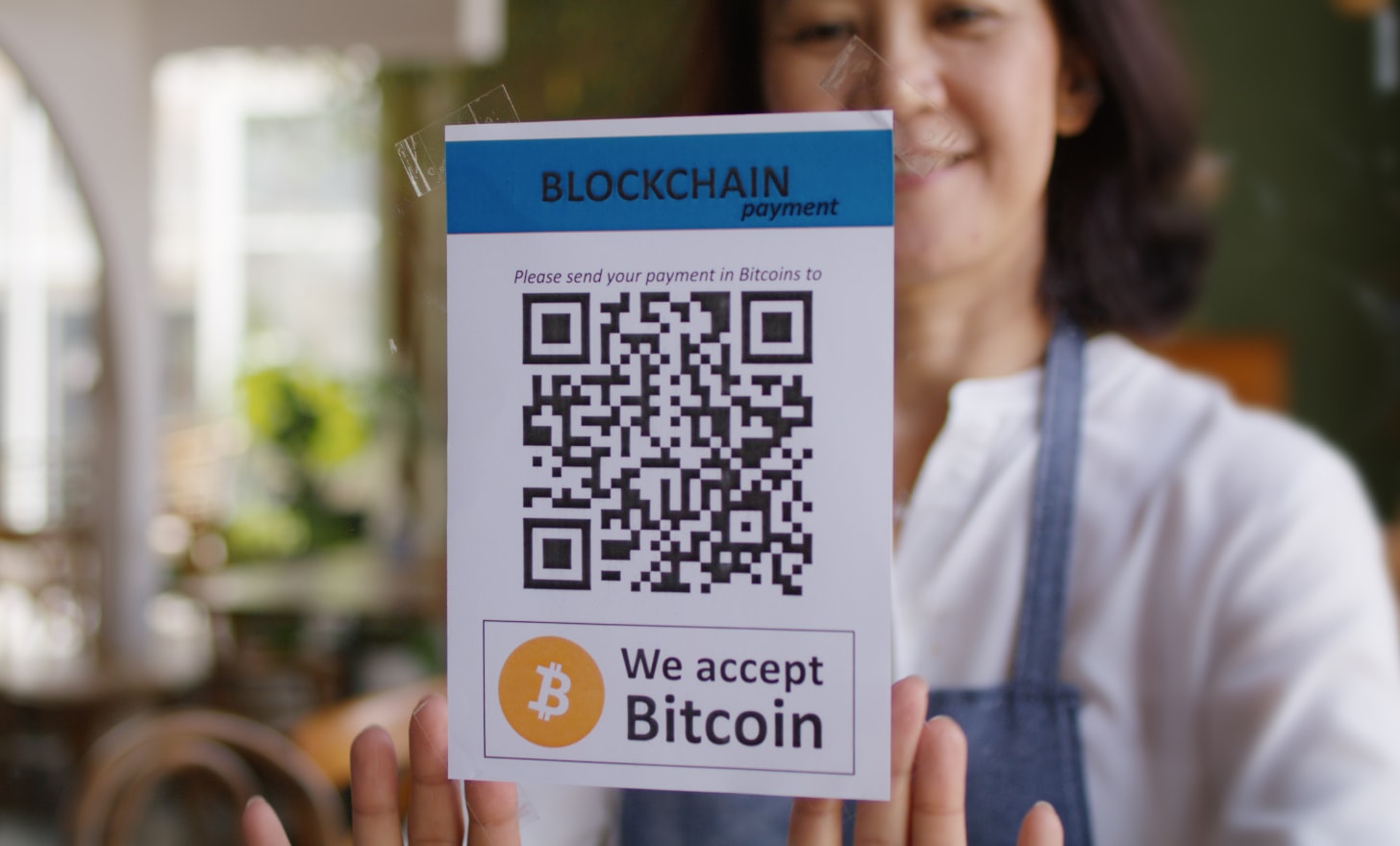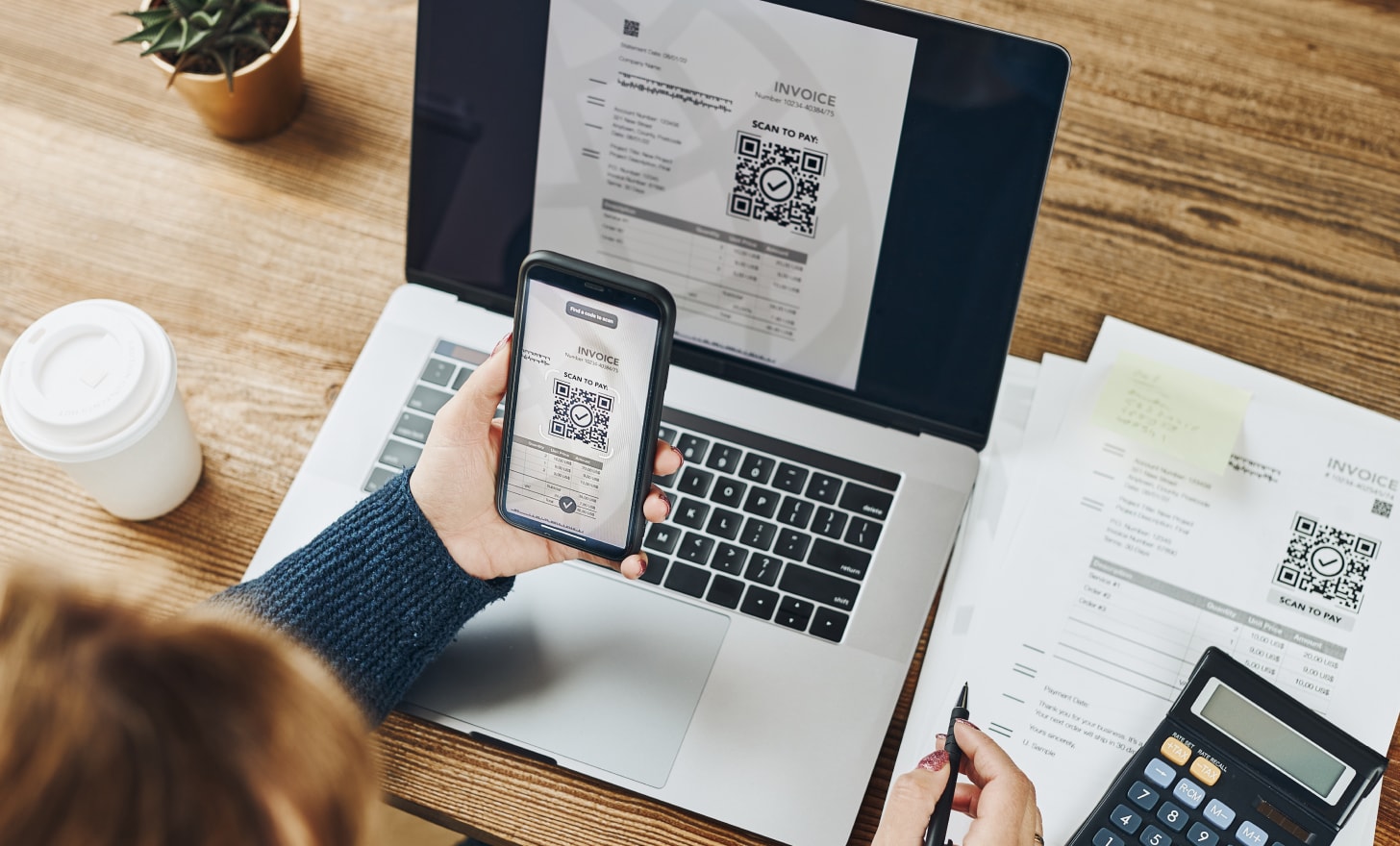QR codes are no longer a temporary solution or a marketing gimmick—they’re now a critical tool connecting the physical and digital worlds. In 2025, QR code technology is at the heart of how businesses engage with customers, streamline operations, and track performance in real time. Whether printed on packaging, menus, posters, or receipts, dynamic QR codes have evolved into gateways to immersive content, instant transactions, and valuable data.
This rapid transformation is being driven by changing consumer preferences, rising smartphone usage, and the widespread adoption of contactless payments. At the same time, advancements in AI, mobile UX, and data analytics are unlocking new ways to use QR codes more creatively and strategically.
In this guide, we’ll break down the top QR code trends shaping 2025—from dynamic campaigns and augmented reality integrations to smart packaging and AI-generated QR codes. We’ll also explore how different industries are using QR codes today, what’s coming next, and how your brand can stay ahead in a world where QR code usage is more active—and expected—than ever.
QR code usage statistics for 2025
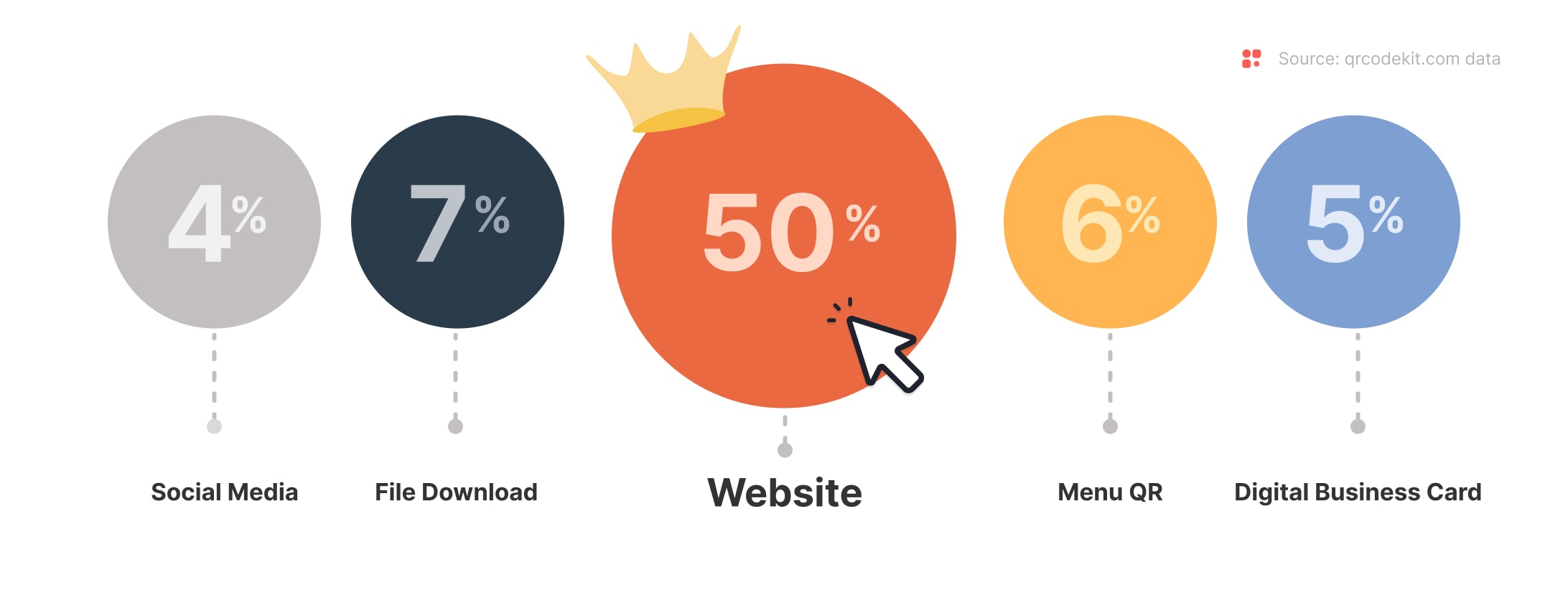
According to QR Code KIT data, in the beginning of this year website QR codes remain the most popular type of QR code created by companies, accounting for 50% of all QR codes generated by businesses. Following closely are file download QR codes at 7%, menu QR codes at 6%, digital business card QR codes at 5%, and social media QR codes at 4%.
In general QR code creation, website QR codes still lead with 28% of all QR codes created globally. File download QR codes come next at 24%, followed by Google Maps QR codes at 8%, WhatsApp QR codes at 7%, and YouTube QR codes at 6%. These statistics highlight the continued growth in QR code usage across different industries and user groups.
These insights set the stage for predicting how QR codes will evolve in 2025. From increased personalization to advanced integrations, the future of QR codes is full of exciting opportunities.
Why QR codes are still growing in 2025
QR codes continue to thrive in 2025—and the data backs it up. What began as a pandemic-era solution has now cemented itself as an essential piece of the modern digital ecosystem. Global businesses and consumers alike have adopted QR codes for everything from mobile payments to digital product experiences, and this widespread adoption shows no signs of slowing down.
QR code usage statistics and adoption data
According to the latest QR code statistics from QR Code KIT and other sources, QR code usage has grown significantly year-over-year. In early 2025, billions of QR code scans are taking place globally every month. From interactive menu QR codes in restaurants to URL QR codes on packaging and signage, the average user has now scanned a QR code dozens of times—often without even thinking about it.
The QR code labels market is also expanding rapidly, particularly in sectors like retail, logistics, and smart packaging. This growth reflects not only the scalability of QR codes, but their flexibility across use cases, formats, and customer journeys.
Factors driving the growth in QR code usage
Several key trends explain the growth in QR code adoption:
- Smartphone users are everywhere: With over 6.5 billion unique mobile phone users worldwide, almost everyone can scan a QR code using their device’s built-in camera.
- Contactless payments are the norm: Thanks to hygiene concerns and convenience, QR code payments and mobile payment systems have gone mainstream.
- Digital habits are stronger: People are more used to scanning, tapping, and swiping to access information than typing long URLs.
- Business needs have evolved: From offline marketing to checkout services, companies now use QR codes as part of broader omnichannel strategies.
These trends are fueling both QR code creation and QR code downloads via platforms that support dynamic generation, analytics, and design customization.

7 QR code trends shaping 2025
The way we use QR codes is changing fast. No longer limited to static links or basic promotions, QR code trends in 2025 reflect a major shift in how brands think about personalization, interactivity, and integration. Let’s explore seven key developments that are shaping the next chapter of QR code technology.
1. Dynamic QR codes are the new standard
Static QR codes are fading out. In 2025, dynamic QR codes dominate because they offer one powerful advantage: flexibility. Businesses can update the destination of a dynamic QR code without reprinting anything, saving time and enabling real-time campaign adjustments.
Dynamic codes also unlock QR code tracking, allowing marketers to measure QR code scans, locations, devices, and behaviors. Whether you’re updating a product landing page, launching a time-sensitive promotion, or localizing content for different markets, QR code generator solutions with dynamic features are now essential.
2. QR code payments go mainstream
The global shift toward mobile payments has made QR code payments a preferred option across industries. In 2025, QR code based payments are widely used not just in Asia, but also in North America, Europe, and Latin America.
With fewer hardware requirements than traditional POS systems, QR-based checkout services are easy to deploy and affordable for small businesses. Shoppers scan, pay, and go—all with minimal friction. The popularity of platforms like Apple Pay, Google Pay, and region-specific wallet apps has helped standardize the use of QR codes for secure, contactless transactions.
3. QR codes meet augmented reality
One of the most exciting QR code trends in 2025 is the integration with augmented reality (AR). When users scan a QR code, they can instantly access immersive content: 3D models, try-before-you-buy experiences, or virtual tours.
Retailers, real estate agents, museums, and event organizers are using QR code embedded content to deliver memorable interactions.
4. Secure QR codes to protect users
As QR code usage increases, so do potential threats. Malicious QR codes can lead to phishing sites or data theft, which is why secure QR code solutions are trending in 2025.
Best practices include using custom domains, enabling link expiration, adding verification steps, and choosing reputable QR code generator solutions. Brands are also educating users on how to identify safe QR codes, especially in high-stakes contexts like payments, healthcare, or public services.
5. Personalized content through QR codes
Today’s consumers expect tailored experiences, and QR codes are rising to the challenge. Businesses now use QR code embedded content that adapts based on time of day, user behavior, or geolocation.
Imagine a user scanning a QR code on product packaging and receiving custom content: language-specific tutorials, local offers, or complementary product suggestions. With dynamic logic and link management platforms, QR codes become tools for true personalization—not just redirection.
6. QR codes in smart packaging and product traceability
The global smart packaging market is booming, and QR code labels are leading the way. In 2025, more brands are adopting QR code-based services to deliver supply chain transparency, product origin data, and sustainability certifications directly to consumers.
Regulations like digital product passports and demands for traceability in retail are pushing this trend forward. Consumers want to know what’s in their product, where it came from, and how it was made—and QR codes are the fastest way to deliver that info at shelf level.
7. AI-generated QR codes and predictive analytics
Artificial intelligence is now playing a major role in how QR codes are created and optimized. Platforms are offering AI-generated QR codes that adjust designs automatically for scanability, test conversion rates, and even A/B test destination pages.
Some tools go a step further with predictive analytics, using historical QR code usage statistics to suggest the best time, place, and format to deploy a code. The result? Smarter campaigns and better performance from every scan
Industry use cases: How brands are adopting QR code trends
While the technology keeps evolving, what truly matters is how QR codes are being used in the real world. In 2025, we’re seeing a clear shift: businesses are no longer experimenting with QR codes—they’re embedding them into core operations across every stage of the customer journey.
Here’s how various industries are embracing the most important QR code trends today.
Retail: from shelf to screen
Retailers have become early champions of QR code innovation. Whether it’s URL QR codes on product packaging that link to tutorials, discount coupons, or inventory details, QR code labels are now a standard part of retail UX.
The growth in smart packaging is playing a key role. Shoppers want transparency, traceability, and rich content—all without needing to download apps. By scanning a QR code, customers can watch how-to videos, access reviews, or check sustainability certifications on the spot.
Hospitality: digital menus and loyalty
Restaurants and hotels are now heavily reliant on menu QR codes and interactive QR code menus. These aren’t just pandemic leftovers—they’ve evolved into full-featured touchpoints for ordering, promotions, and real-time menu updates.
According to 2025 data from QR Code KIT, menu QR codes account for 6% of all codes generated by businesses. That’s a clear sign that digital menus are here to stay—and becoming more integrated with QR code-based loyalty programs, feedback loops, and upselling strategies.
Healthcare: fast, secure, paperless
Healthcare providers use QR code solutions to simplify access to patient records, prescriptions, and lab results. Patients scan QR codes to view secure documents or submit forms without waiting in line.
This shift also helps reduce errors and paper usage, while enabling secure, GDPR-compliant processes. In the public health space, QR code scanning is still used for contact tracing, vaccine records, and health check-ins, especially during travel or event entry.
Logistics and manufacturing: real-time visibility
Supply chains rely heavily on QR code labels and 2D barcodes to improve traceability. Whether tracking raw materials, managing delivery routes, or verifying authenticity, QR codes now support every layer of logistics infrastructure.
Smart factories use QR code scanning to update status logs, initiate automated workflows, or pull up maintenance records on machines. This granular level of traceability makes QR codes indispensable in today’s global smart packaging market.
Events and entertainment: frictionless access
From concerts to conferences, QR code based services are transforming how attendees check in, access materials, and engage with content. Digital tickets, swag redemption, real-time polls, and post-event feedback are all handled through scannable codes.
Event organizers also use dynamic QR codes to deliver updates mid-event, promote sponsor activations, or share highlight reels—all while collecting useful QR code usage statistics behind the scenes.
Public sector and education: access and accountability
Governments are expanding their use of QR codes to support services like tax filing, identity verification, or voter registration. By scanning a code on a document or sign, citizens are routed to official resources without risk of phishing.
In education, schools and universities use QR code generator solutions to distribute digital materials, assign personalized content, or verify attendance in a contactless way—especially in hybrid or remote settings.
Marketing with QR codes in 2025
In the world of modern marketing, few tools offer the versatility and immediacy of QR codes. In 2025, QR code usage in marketing has moved beyond novelty—it’s a proven strategy for boosting engagement, tracking behavior, and personalizing content at scale. Whether you’re running a nationwide campaign or promoting a single product, the right QR code solution turns any offline moment into a digital interaction.
Turning print into performance
Print advertising is enjoying a quiet revival—thanks in large part to QR codes. Posters, flyers, magazines, and even packaging now act as digital gateways.
By using URL QR codes, brands can connect static content to landing pages, promotional videos, surveys, or discount coupons. Marketers can then track QR code scans in real time, analyze performance by region or timing, and optimize messaging without needing to reprint a thing.
Real-time engagement at every touchpoint
Dynamic QR codes are now central to many marketing campaigns. These codes can be updated as offers change, localized by language or region, or scheduled to go live on a specific date.
This flexibility is especially useful for A/B testing, retargeting, and collecting first-party data. You can place QR codes on receipts, packaging, product tags, or event signage—and tailor each one for a different experience based on QR code scanning behavior.
Social integration and omnichannel strategy
In 2025, marketing is all about meeting users where they are—and QR codes help unify that journey. You can use a single code to connect your offline campaign to your digital channels: social media profiles, app downloads, contact forms, and more.
This is where link management platforms come in. A centralized QR code system allows teams to manage thousands of codes, segment audiences, and build branded short links with analytics built in. The result is a seamless flow between physical and digital worlds.
Immersive content and storytelling
Today’s QR code trends show a clear push toward content that’s not just clickable—but memorable. QR code embedded content can include mini-games, interactive product demos, behind-the-scenes videos, or exclusive bonus material.
Whether you’re promoting a fashion line, a new movie, or a product launch, QR codes can serve as access keys to richer brand storytelling. For Gen Z and Millennials in particular, this kind of engagement is no longer a bonus—it’s expected.
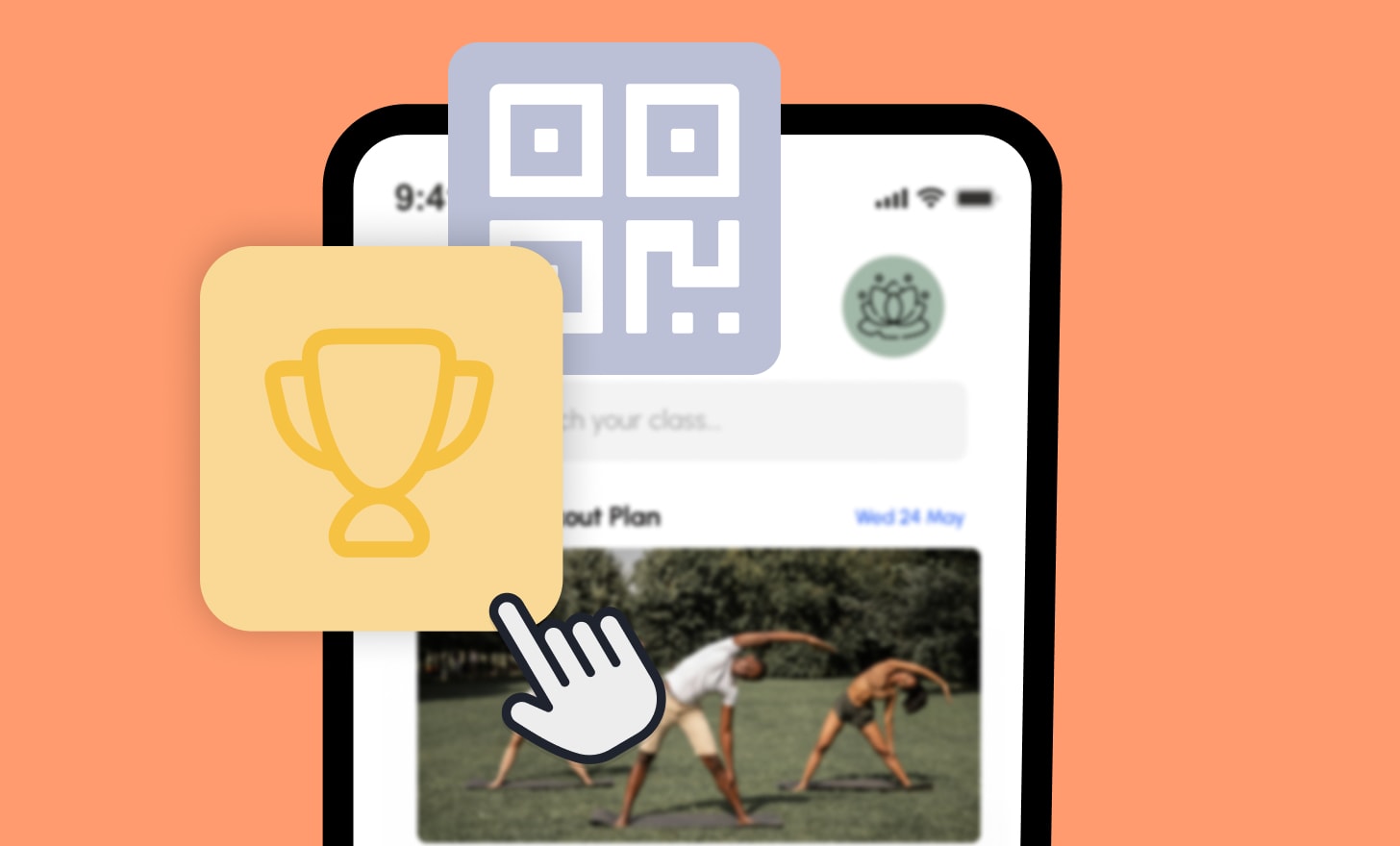
Customization and branding: The visual future of QR codes
As competition for attention increases, standing out visually is more important than ever. In 2025, QR code customization has become a strategic branding opportunity—not just a design detail. With consumers scanning dozens of codes per week, visually distinct branded QR codes are more likely to earn trust, engagement, and repeat interaction.
Why branded QR codes outperform generic ones
A plain black-and-white square may get the job done—but a branded QR code aligned with your company’s identity creates instant recognition. When people see your colors, your logo, and a clear call-to-action, they’re more likely to scan your QR code and follow through.
According to recent QR code usage statistics, customized codes consistently outperform generic ones in both scan rates and engagement. Even small tweaks—like adding a logo or changing color—can make a measurable difference in how people interact with your content.
Best practices for QR code design
The best QR code generator solutions allow for full customization without sacrificing functionality. Here’s how to make sure your custom QR codes are both beautiful and scannable:
- Add your logo: A centered logo can boost brand recall while still allowing for reliable scanning.
- Use brand colors: Background and foreground shades should contrast clearly—test before launching.
- Frame with purpose: Use CTAs like “Scan to explore” or “Get your offer” to guide action.
- Maintain quiet zones: Leave breathing room around your code to ensure readability.
These design choices contribute to trust and user confidence—especially when your QR code appears on product packaging, menus, or advertising materials.
Combining branding with security and flexibility
Branding isn’t just visual—it’s functional, too. The most effective companies in 2025 are pairing custom QR codes with secure domains, trackable analytics, and dynamic editing capabilities.
This combination helps prevent spoofing or phishing while keeping your QR assets adaptable. For example, a custom QR code printed on a physical tag can later point to a seasonal campaign, a localized landing page, or updated product information—without needing to be reprinted.
When powered by a platform like QR Code KIT, these features are all managed from one central dashboard—making QR code generation more efficient, secure, and aligned with your brand.
Real-world use cases for custom QR codes
- Retail: QR codes with brand colors on hang tags link to styling tips or product origins.
- Food & beverage: Branded QR codes on packaging guide consumers to nutritional facts or sourcing stories.
- Hospitality: Menu QR codes designed in the house style create visual consistency across locations.
- Events: Conference badges and posters use customized codes for lead capture and sponsor promotion.
In all these cases, the customized design isn’t just decorative—it’s a powerful way to place QR codes at the center of a brand experience.
Challenges and considerations
As QR code adoption accelerates worldwide, it brings both opportunity and responsibility. In 2025, businesses using QR code technology must consider not just performance—but also privacy, accessibility, and compliance. To build trust and maximize results, it’s essential to approach QR code strategy with the right safeguards in place.
QR code safety and fraud prevention
With billions of global QR code scans happening monthly, malicious actors have taken notice. Fake QR codes—especially in public places—can redirect users to phishing sites or malware downloads.
To prevent this, companies should:
- Use only trusted QR code generator solutions with secure, HTTPS-enabled links.
- Register custom domains to reduce spoofing risks.
- Educate users on how to verify legitimate QR code labels—especially on receipts, packaging, or printed ads.
Security is no longer optional—it’s a standard expectation from modern QR code users.
Accessibility and user experience
While most modern smartphone users can scan QR codes effortlessly, accessibility still matters. Some challenges to consider:
- Font size and contrast: Ensure codes are large and high-contrast enough to scan under various lighting conditions.
- Placement: Don’t place QR codes in awkward or hard-to-reach locations (e.g., corners of folded flyers or reflective surfaces).
- Alternate access: For critical information (e.g., health services or legal terms), provide a URL as a backup for users who may not be able to scan.
Optimizing QR code scanning experiences leads to better results and broader reach.
Compliance and global standards
As QR codes continue to power digital payments, smart packaging, and traceability efforts, businesses need to align with international regulations. In 2024, the IEC released an updated global standard: IEC ISO 18004:2024—which defines key parameters for readable, secure QR code creation.
Brands using QR code solutions—especially those in regulated industries like food, pharmaceuticals, or electronics—should:
- Follow sizing and contrast standards
- Ensure machine-readability across common devices
- Meet documentation requirements for digital labeling
Platforms like QR Code KIT ensure that generated codes are compliant with these evolving guidelines, helping brands avoid fines and maintain credibility.

The future of QR code technology
Looking ahead, it’s clear that QR code technology will continue to evolve far beyond its current capabilities. In 2025 and beyond, the most exciting QR code trends are being shaped by AI, tighter integrations with other technologies, and new global regulations that push for digital transparency. What’s emerging is a smarter, more strategic use of QR codes—one that blends physical interaction with personalized digital experiences.
Digital product passports and traceability
One of the most significant drivers of future QR code adoption is the rollout of digital product passports across industries. These initiatives aim to provide full transparency into a product’s lifecycle—from raw materials to disposal. And QR codes are the fastest, most universal way to deliver that data.
In sectors like fashion, electronics, and baby products, scanning a QR code label will give consumers instant access to:
- Sourcing information
- Sustainability certifications
- Recycling instructions
- Repair or reuse options
This push aligns with global goals around circularity, compliance, and smart packaging—and QR codes are the bridge that makes it all possible.
AI-powered optimization
AI is also playing a transformative role in how we design, deploy, and measure QR codes. In 2025, we’re seeing rapid growth in AI-generated QR codes, where artificial intelligence assists in optimizing code layout, color contrast, and call-to-action messaging for better scan rates.
On the backend, predictive algorithms are helping businesses:
- Forecast QR code scans based on weather, location, or time of day
- Recommend the best placement for QR code downloads
- Personalize landing pages dynamically when users scan QR codes
These advancements make QR code campaigns smarter, faster, and more adaptive—unlocking more value from each scan.
Deeper integrations with smart systems
The future of QR code-based services will include tighter integrations with IoT, blockchain, and other checkout services. Imagine scanning a code on a connected product and instantly receiving a push notification with a warranty reminder or firmware update.
We’ll also see QR code generator platforms expanding their toolsets to support:
- Inventory management
- Geofenced content delivery
- Cross-device handoffs between mobile and desktop
As technology matures, QR codes won’t just link to content—they’ll trigger automated actions, unlock features, and sync with digital ecosystems in real time.
Conclusion: Making the most of QR code trends in 2025
QR codes are no longer optional—they’re foundational. In 2025, they’ve evolved into a dynamic layer of every customer journey, seamlessly connecting the physical and digital worlds. From personalized content and secure payments to real-time analytics and smart packaging, QR code technology is shaping how brands engage, inform, and convert.
The rise in QR code usage across industries—and the diversity of use cases—is proof that this is no passing trend. It’s a permanent shift in how businesses interact with users. Whether you’re running marketing QR codes, integrating QR code menus, or creating custom QR code labels for global distribution, the opportunities are only expanding.
How to stay ahead with QR codes in 2025
The businesses leading the way in QR code adoption share a few things in common:
- They use dynamic QR codes that can be edited and tracked in real time
- They invest in branded QR code customization to boost trust and recognition
- They track performance with detailed QR code usage statistics
- They implement secure QR code solutions to protect their users
- They connect QR codes across offline and online experiences—from packaging to campaigns
This holistic approach allows them to move fast, experiment, and optimize at scale.
Why QR Code KIT is the right partner
To unlock the full value of these trends, you need more than just a code—you need a platform. With QR Code KIT, you can:
- Generate and customize your codes with logos, colors, and CTAs
- Use dynamic QR code generator tools to update content anytime
- Track scans and user behavior in real time
- Ensure your QR codes are compliant with IEC ISO 18004:2024
- Scale campaigns through API integration and link management
Whether you’re a startup or an enterprise, QR Code KIT gives you everything you need to turn QR codes into a strategic asset.
Final thought
QR code trends in 2025 point to a smarter, more connected future. Now’s the time to go beyond just placing codes on print materials. Start building real experiences, gathering actionable insights, and turning scans into meaningful touchpoints.
If you’re ready to find QR codes that do more than redirect—QR Code KIT is ready to help you create, optimize, and lead.

